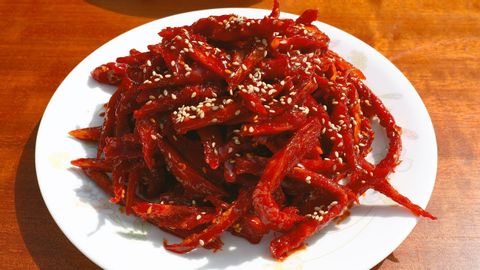
Subtitles & vocabulary
Dried shredded pollock seasoned with gochujang (Bugeopo gochujang-muchim: 북어포 고추장무침)
00
林宜悉 posted on 2020/03/25Save
Video vocabulary
grocery
US /'ɡroʊsərɪ/
・
UK /'ɡrəʊsərɪ/
- Uncountable Noun
- Daily foods such as flour, sugar, and tinned foods
- Countable Noun
- A store that sells food and household supplies.
B2TOEIC
More precious
US /ˈprɛʃəs/
・
UK /'preʃəs/
- Adjective
- Having a youthful, cute, and pleasant appearance
- Very little (time, money etc.)
B1
More texture
US /ˈtɛkstʃɚ/
・
UK /ˈtekstʃə(r)/
- Noun (Countable/Uncountable)
- Quality from different elements, as in music
- Look and feel of a substance or material
- Transitive Verb
- To give a particular look or feel to a surface
B1
More recipe
US /ˈrɛsəˌpi/
・
UK /'resəpɪ/
- Noun
- Conditions likely to create a particular result
- Directions for making a dish, with the ingredients
B1
More Use Energy
Unlock All Vocabulary
Unlock pronunciation, explanations, and filters
